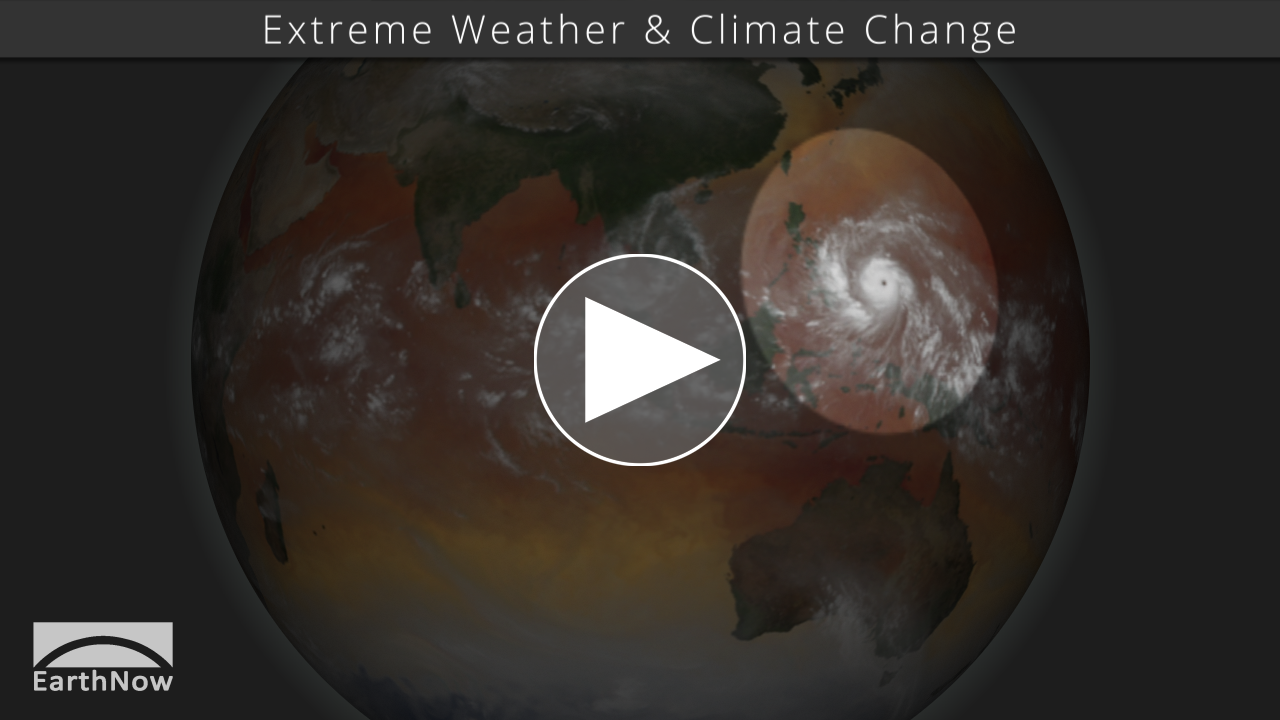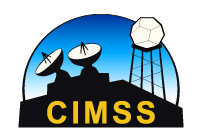Overview
As part of National Severe Weather Preparedness week, the EarthNow team is releasing its latest featured story, regarding extreme weather and climate change. Three out of four adults in America say that global warming is affecting weather in the United States. Global warming is also being blamed on changing weather patterns internationally, including by delegates at the United Nations Convention on Climate Change. This piece explores what the science says about these changes and extreme weather.
For more information on how you can “be a force of nature,” visit NOAA’s Weather-Ready Nation page at: http://noaa.gov/wrn
About the Dataset
Audio Dataset Name: 20140305 EarthNow: AUDIO Extreme Weather and Climate Change
- The first part of this dataset shows water vapor satellite imagery over sea surface temperatures, during the time of Typhoon Haiyan. Haiyan is “highlighted” at times as well. This section also includes an image of 3 out of 4 people “highlighted” demonstrating that “three out of four adults in America say that global warming is affecting weather in the United States.”
- Following Typhoon Haiyan, we look at some basics of weather and climate, focusing on Earth being a water planet (pie chart shown) and water’s three phases (shown as circular animations on the globe).
- Following these schematics, we are introduced to some water vapor satellite imagery, showcasing weather patterns.
- Then, a simple animation of how water vapor fuels tropical cyclones and what happens as storms move over land and what will happen as oceans warm.
- At the end, we show lights from the 2012 Earth at night, mentioning how many people live near the coast lines, and then overlay with some transparency, IR satellite imagery from Hurricane Sandy. A PIP-style animation of the June 2013 derecho is also shown, conveying non-coastal extreme weather.
- Lastly, we provide information about NOAA’s Weather-Ready nation program, including the URL: noaa.gov/wrn.
The Science and Impact
Earth is a water planet. Oceans and lakes cover three quarters of the Earth’s surface, as depicted in this pie chart.
Water is the only substance on Earth that exists naturally as a solid, liquid, and gas. The gas phase of water is referred to as water vapor. Did you know that water vapor is the most abundant greenhouse gas in Earth’s atmosphere?
While we can’t see water vapor in the atmosphere, instruments on satellites can. Storms in the mid-latitudes draw the warm moisture from the tropics. Weather patterns help redistribute heat and moisture around the planet. This means that the availability of water vapor fuels or limits all atmospheric processes.
Let’s take a closer look at how water vapor fuels tropical cyclones, also called hurricanes and typhoons. Rising air over warm ocean waters carries water vapor upward into colder air. As this happens, warm moist air near the surface rushes in to take its place, creating the strong winds associated with hurricanes. As the warm air rises, the water vapor cools and condenses into clouds, releasing heat. The added heat accelerates this process. The rotating Earth causes the storm to begin spinning. Once a storm moves over land, it weakens rapidly largely because the storm lacks the moisture and heat the ocean provided.
Looking at typhoons and hurricanes over time, researchers see a trend. In a warming world with warmer oceans, there is more evaporation and fuel for storms, leading to more powerful storms. The warmer air can also hold more moisture, meaning heavier rainfall. Finally, rising sea levels mean higher storm surges and more flooding. Basic science points to bigger storms, changing weather patterns, and more extremes.
What does this mean for you? If you live near the coast, like a lot of people, there is an increased vulnerability to storms due to rising sea levels. For example, Hurricane Sandy made landfall in the highly populated Northeastern United States. Sandy caused an estimated $77 billion in damage in the U.S.
But even if you don’t live near the coastline, research shows that Earth’s changing climate is altering the frequency, intensity, extent, and duration of other extreme weather events around the world.
Wherever you live, it’s important to understand the type of hazardous weather that might affect you and your family.
Where do I find the datasets?
-
First, check your SOS system to make sure it’s not already in the EarthNow category.
-
If not, you can download the datasets and playlist files from this FTP Site.
-
Then download and use playlist files at the top of the page (or create your own) and make sure they are in /home/sosrc or /home/sosrc.
-
More detailed information here
-
Magic Planet Version







